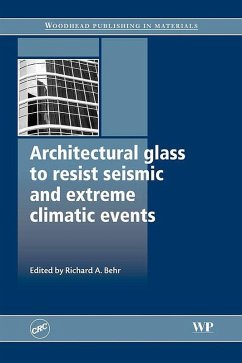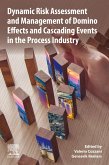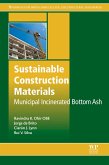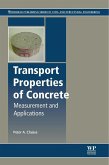Glass is a popular cladding material for modern buildings. The trend for steel-framed, glass-clad buildings instead of those using traditional materials such as brick and concrete has inherent problems. These include, for example, the performance of architectural glass in extreme climatic events such as windstorms and heavy snow loads and also during earthquakes. This book reviews the state-of-the-art in glass and glazing technology to resist failure due to these natural events.
Building code seismic requirements for architectural glass in the United States are considered first of all, followed by a chapter on glazing and curtain wall systems to resist earthquakes. The next two chapters discuss snow loads on building envelopes and glazing systems, and types and design of glazing systems to resist snow loads. Wind pressures and the impact of wind-borne debris are then considered in the next group of chapters which also review special types of glazing systems to resist windstorms. A final chapter reviews test methods for the performance of glazing systems during earthquakes and extreme climatic events.
With its distinguished editor and team of contributors, Architectural glass to resist seismic and extreme climatic events is an essential resource for architects, structural, civil and architectural engineers, researchers and those involved in designing and specifying building glazing and cladding materials in areas where severe windstorms, snow and earthquakes are a threat.
Building code seismic requirements for architectural glass in the United States are considered first of all, followed by a chapter on glazing and curtain wall systems to resist earthquakes. The next two chapters discuss snow loads on building envelopes and glazing systems, and types and design of glazing systems to resist snow loads. Wind pressures and the impact of wind-borne debris are then considered in the next group of chapters which also review special types of glazing systems to resist windstorms. A final chapter reviews test methods for the performance of glazing systems during earthquakes and extreme climatic events.
With its distinguished editor and team of contributors, Architectural glass to resist seismic and extreme climatic events is an essential resource for architects, structural, civil and architectural engineers, researchers and those involved in designing and specifying building glazing and cladding materials in areas where severe windstorms, snow and earthquakes are a threat.
- Considers the state of the art in glass and glazing technology to resist failure due to extreme climatic events
- Reviews specific building techniques and test methods to enhance glazing performance during snow storms, wind storms and earthquakes
Dieser Download kann aus rechtlichen Gründen nur mit Rechnungsadresse in A, B, BG, CY, CZ, D, DK, EW, E, FIN, F, GR, HR, H, IRL, I, LT, L, LR, M, NL, PL, P, R, S, SLO, SK ausgeliefert werden.









